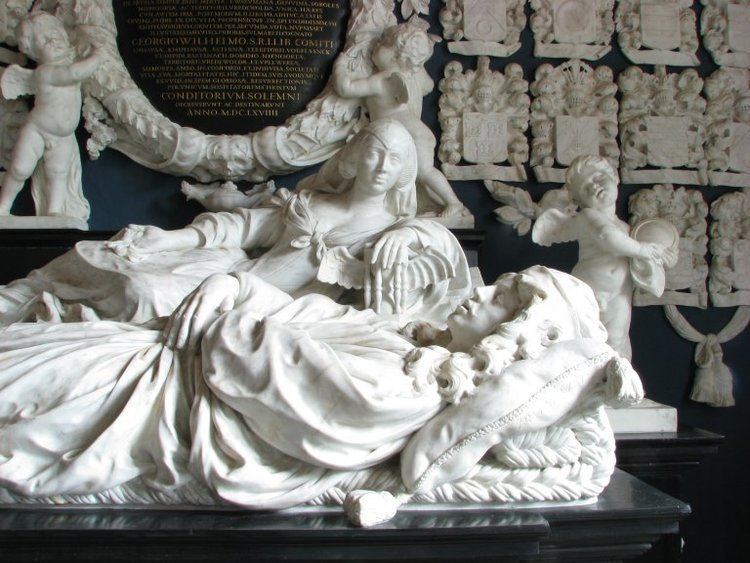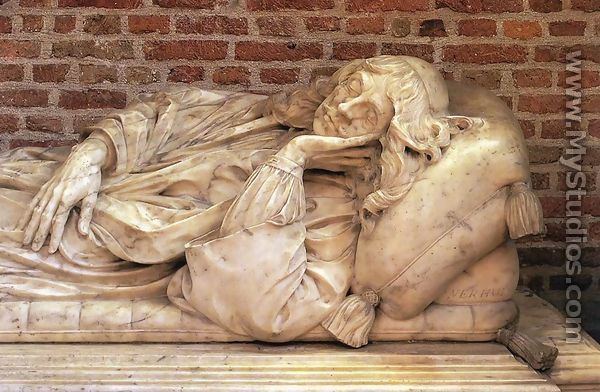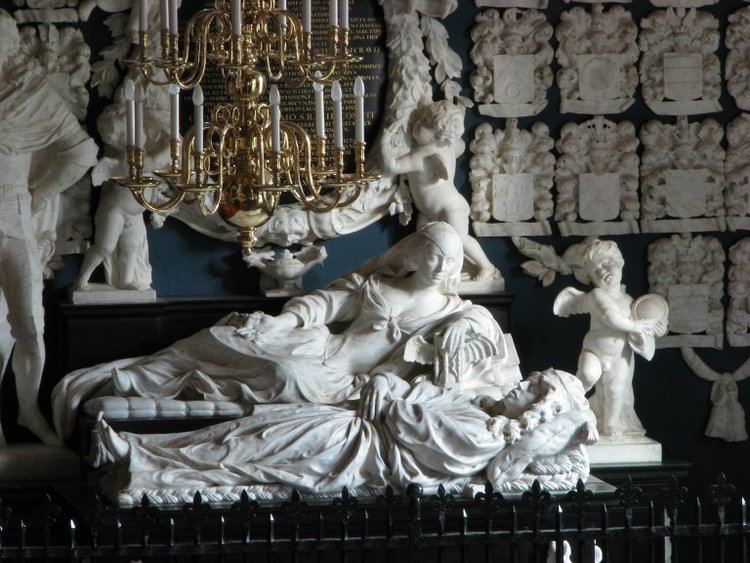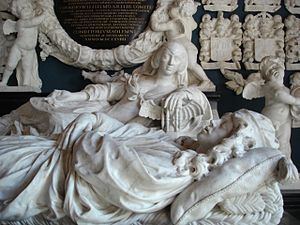Name Rombout Verhulst | Period Baroque | |
 | ||
Died November 27, 1698, The Hague, Netherlands | ||
Appartementen rombout verhulstlaan te almelo
Rombout Verhulst (15 January 1624 – buried 27 November 1698) was a Flemish sculptor and draughtsman who spent most of his career in the Dutch Republic. There he helped introduce the Baroque style in sculpture while becoming the leading sculptor of marble monuments, including funerary monuments, garden figures and portraits.
Contents

Life
Rombout Verhulst was born in Mechelen, where he studied with the sculptors Rombout Verstappen en Frans van Loo and possibly also Lucas Faydherbe. It is assumed that between 1646 and 1654 he made a trip to Italy.

In 1646 he moved to Amsterdam, where he worked under the Flemish sculptor Artus Quellinus on the decoration of the new town hall. His independent position among Quellinus' co-workers is apparent from the fact that he was the only one to individually sign works in this project. At the Amsterdam town hall, he is known to have executed the reliefs of Venus, Fidelity and Silence for the galleries and terracotta studies for the bronze doors of the Vierschaar. During the 1660s, Verhulst was able to rely on a network of private patrons in which the van Reygersbergh family played a pivotal role. In 1663 Verhulst completed a funeral monument for Maria van Reygersbergh in the church of Katwijk-Binnen. This was the first private commission for this type of work in the second half of the 17th century. His patronage shifted gradually from Amsterdam to The Hague.

Around 1658 he moved to Leiden where he produced various sculptures for urban buildings and for tomb monuments. In 1663 he established himself in the Hague, where in 1668 he became a member of a guild. He died, aged 74, in The Hague.

He was the teacher of Jan Blommendael and Jan Ebbelaer.
Work
Rombout Verhulst is best known for his many tomb monuments, but he made also portrait busts, garden sculptures and small-scale works in ivory.
His portrait oeuvre is rather small, which demonstrates that there was only a limited market for portrait sculptures in the Dutch Republic. One of his best-known portraits is the marble bust of Jacob van Reygersbergh dated 1671, now in the Getty Museum in Los Angeles. A terracotta study for this work is in the Rijksmuseum and it differs from the marble version only in details. This portrait bust shows Verhulst's virtuosity and the naturalism of his style. He removed any tendency to idealize the sitter in this work. In his terracotta portraits he was able to create a living presence through his sensitive handling of the physiognomy and a correct evocation of the sitter's personality.
Verhulst is mainly remembered for this many tomb monuments for private and public patrons. His funeral monument for Maria van Reygersbergh of 1663 established his reputation in this area with its new and imposing style. He made many church monuments erected to commemorate Dutch naval heroes. His chief work in this area (though possibly not his most successful creation) is the decorated tomb of the Dutch naval hero Michiel de Ruyter in the Nieuwe Kerk in Amsterdam.
In addition to the monumental commissions he completed, Verhulst made small-scale ivory carvings, a specialty for which his home town Mechelen was particularly known. A small ivory Virgin and Child held in the Rijksmuseum shows his skill in this regard. He has carved the thick, wavy locks of hair of the chubby Christ Child and the heavy drapery with such realism that they appear almost tangible.
Although his style was indebted to Artus Quellinus, he did not completely adopt Quellinus' classicist tendencies. Verhulst's work is warmer in conception and executed with greater refinement and therein resembles more that of the Antwerp sculptors from the circle of Peter Paul Rubens, including Hans van Mildert and Lucas Faydherbe. His work was usually more realistic than that of Quellinus and is less dramatic.
